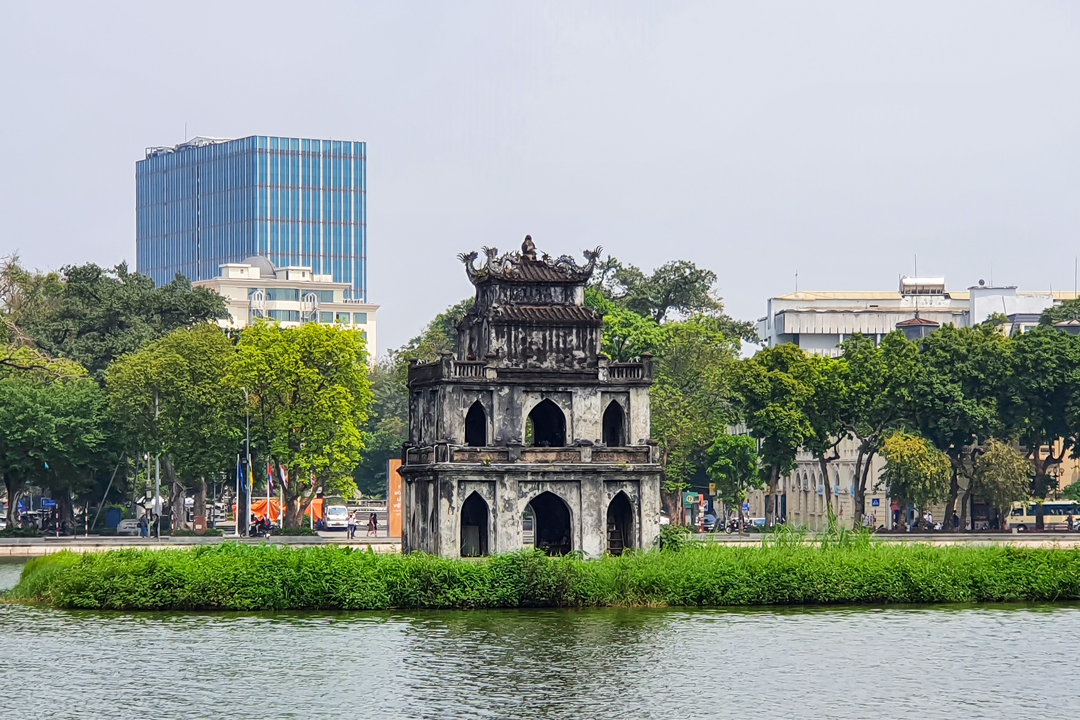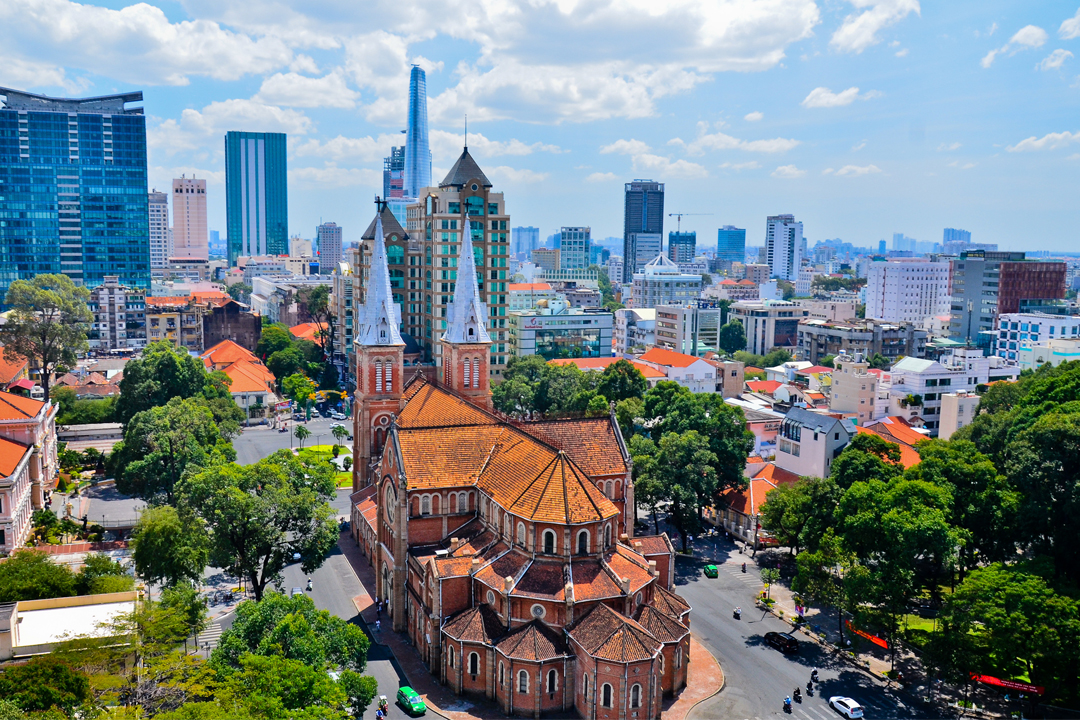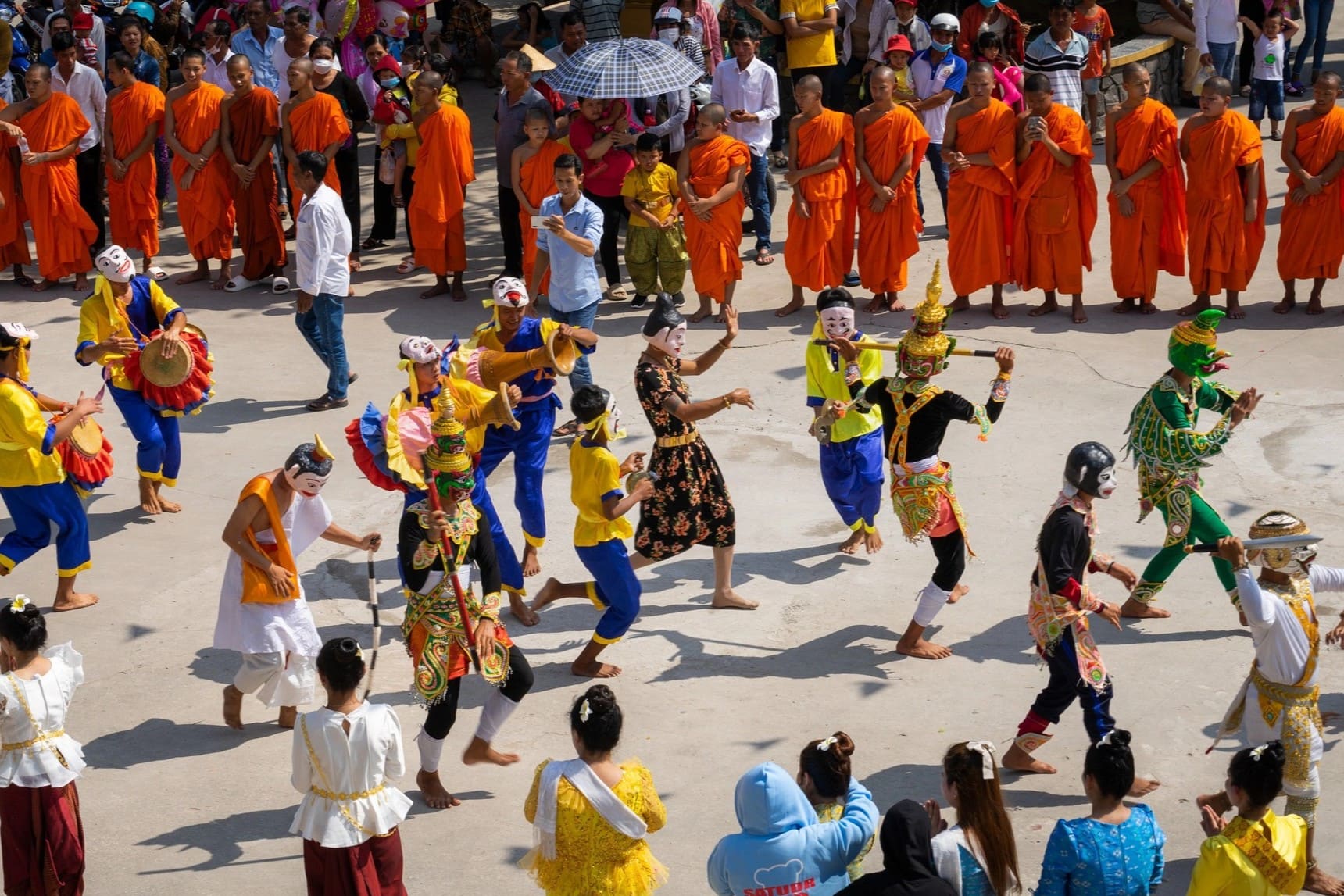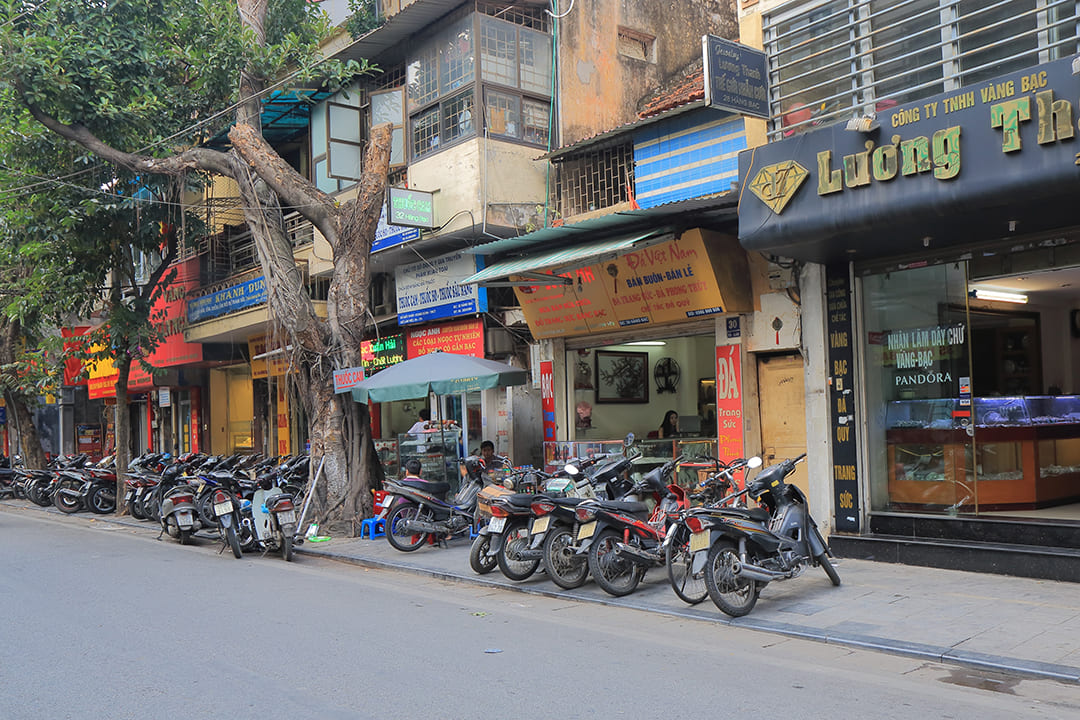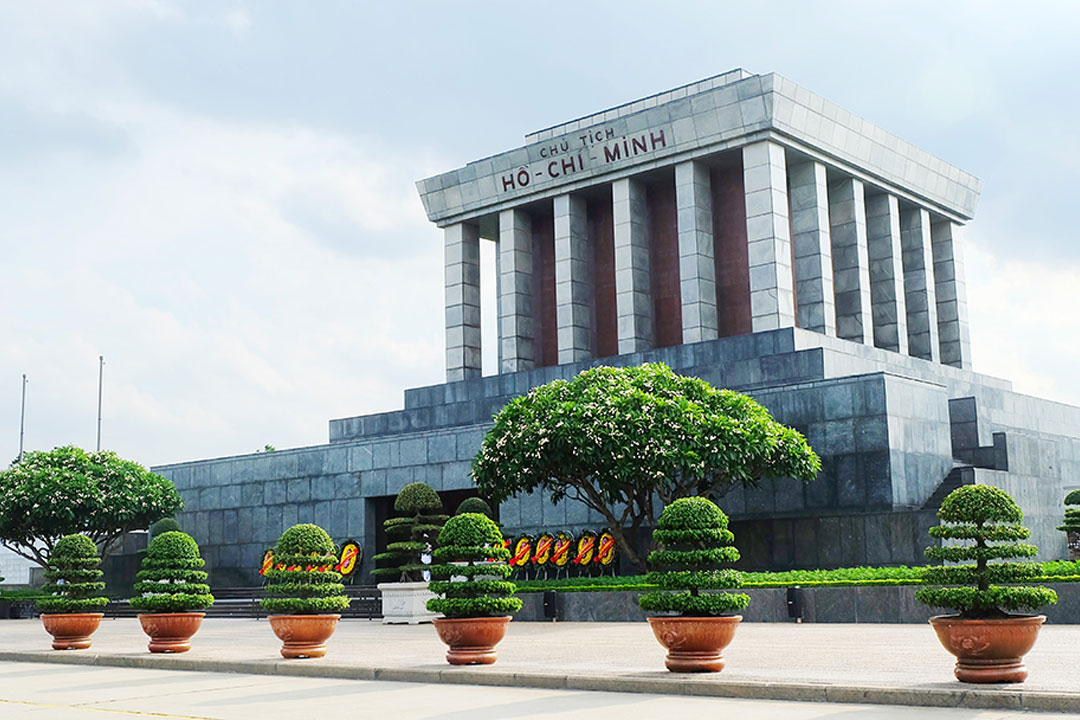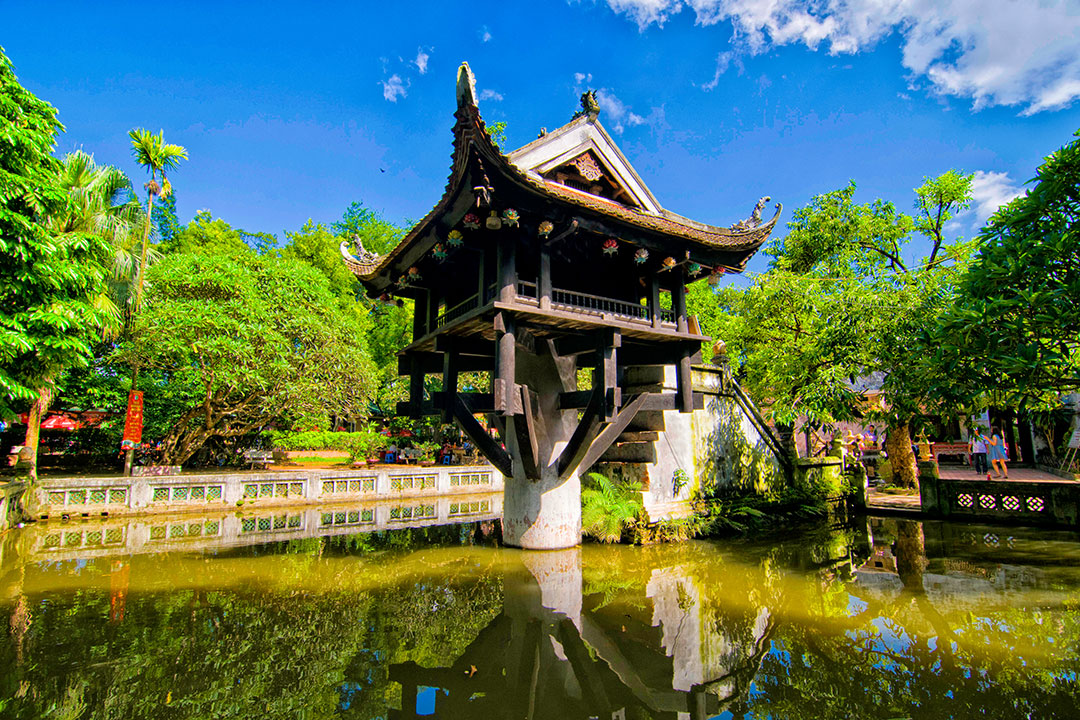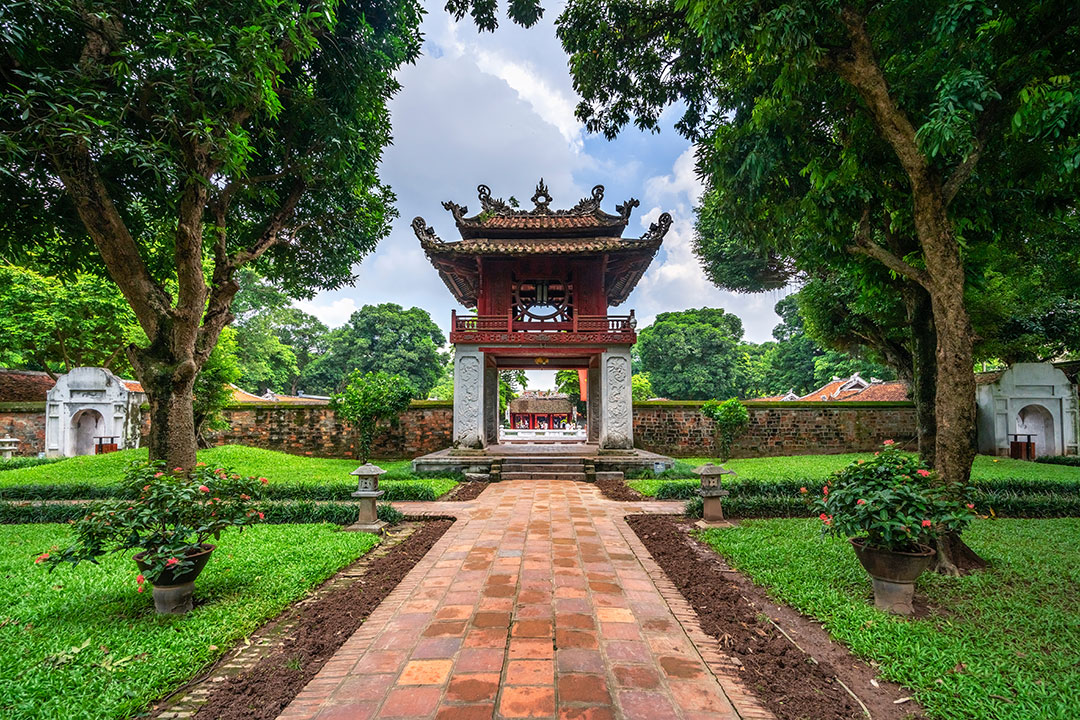Hang Bac Street Hanoi: Location, History & Things to Do
Hang Bac Street is a shimmering thread in the rich tapestry of the Old Quarter, offering a unique journey into the city's centuries-old silver crafting heritage. This guide of GTrip will illuminate why this historic lane is more than just a place to shop. We'll delve into its storied past, admire its unique architecture, and explore the diverse activities available, from haggling for artisan jewelry to savoring delectable local cuisine. Let's explore why this 300-meter lane is a must-visit for any traveler in Hanoi.
Where is Hang Bac Street?
Hang Bac Street lies in the heart of the Old Quarter. Its name, "Hang Bac", literally translates to "Silver Street," a direct reflection of its long history as the city's primary hub for silver craftsmanship. Though only about 300 to 500 meters long, this street is a concentrated hive of commercial and cultural activity, connecting major thoroughfares like Hang Ngang and Hang Dao. Its prime location makes it an ideal starting point for exploring the wider Old Quarter.
History of Hang Bac Street
Hang Bac Street was founded in the 15th century under Emperor Le Thanh Tong of the Later Le Dynasty, who decreed the creation of a royal silver-casting workshop. This was not merely a commercial venture but a strategic decision to centralize currency production for the court. Luu Xuan Tin, a senior official, was appointed to oversee the minting of silver ingots, elevating the street’s status from the very beginning.
To fulfill this royal mission, master silversmiths were summoned from renowned craft villages like Chau Khe in Hai Duong, Dong Xam, and Dinh Cong. These artisans brought with them their families, skills, and traditions, forming a vibrant, specialized guild community. Their presence laid the foundation for a street defined by craftsmanship, symbolized by the construction of Kim Ngan Temple, dedicated to the founder of the silver trade.
Under French colonial rule, the street was renamed Rue des Changeurs and became a hub for both jewelry making and financial services. Though its role evolved over time, Hang Bac never lost its essence. Today, it remains Hanoi’s heart of jewelry commerce, where centuries-old workshops thrive beside modern stores, preserving the spirit of craftsmanship while adapting to contemporary tastes.
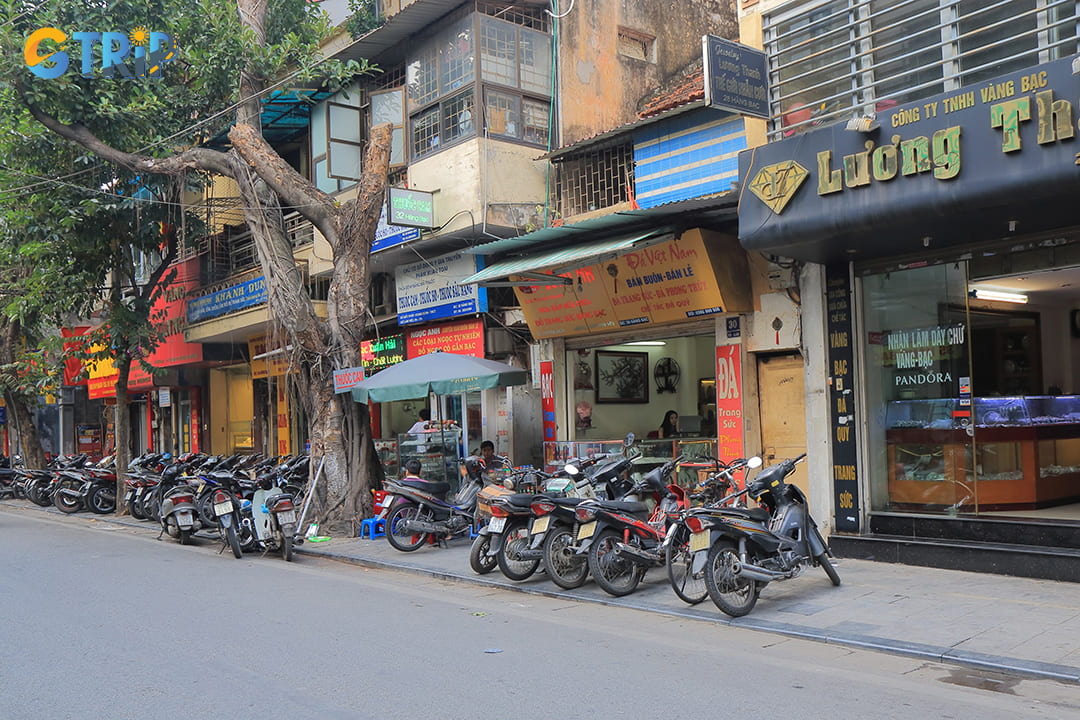
Today, Hang Bac Street remains Hanoi’s heart of jewelry commerce
Why visit Hang Bac Street?
A visit to Hang Bac Street offers a captivating glimpse into Hanoi's soul. The street is famed for its unique architectural landscape, a harmonious blend of traditional Vietnamese tube houses and French colonial influences. These narrow, deep buildings, with their classic red-tiled roofs, stand alongside structures with distinct Western design elements. Adding to the street's historical and spiritual appeal is the ancient Kim Ngan Temple, a communal house that has served as a spiritual anchor for the local silversmith guild for centuries.
Things to do in Hang Bac Street
Immerse yourself in the vibrant life of Silver Street with these essential activities for your Hanoi itinerary.
1. Shop for locally crafted silver, gold, gemstone, and custom-designed jewelry
The primary allure of Hang Bac is the dazzling array of jewelry shops. Here, you can find a wide variety of precious materials, including silver, gold, white gold, and gemstones like jade and ruby. The offerings range from intricate, traditional silver necklaces and bracelets to modern, custom-designed engagement rings.
When shopping, take your time to distinguish between mass-produced items and the unique, handmade pieces that tell a story of local craftsmanship. Many shops offer bespoke services, allowing you to collaborate with skilled artisans to create a personalized treasure, a perfect, lasting souvenir of your time in Hanoi.

The primary allure of Hang Bac is the dazzling array of jewelry shops
2. Watch craftsmen at work in open-front workshops
One of the most authentic experiences on Hang Bac is observing artisans in their element. The street functions as a "living museum" where you can peer into open-front workshops and witness the meticulous process of jewelry making. The gentle, rhythmic tapping of hammers, the focused glow of small torches, and the quiet concentration of the craftspeople are a spectacle in themselves. This transparency is a hallmark of the street's heritage and a sign of the authenticity of the products. It’s a rare opportunity to see centuries-old techniques passed down through generations being practiced today.
3. Enjoy photography and guided walks exploring historical buildings and Old Quarter vibes
Hang Bac Street is a photographer's delight, offering a rich tapestry of visual contrasts. Capture the interplay between the weathered facades of historic tube houses, the gleaming modern shopfronts, and the ceaseless energy of street life. The unique architectural details provide a stunning backdrop for any photo.
To truly appreciate the stories behind the beautiful facades, consider exploring on foot. The street is a highlight of many Hanoi walking tours that focus on culture and history, where a guide can reveal hidden architectural gems and share tales of the families and guilds that have shaped the street.
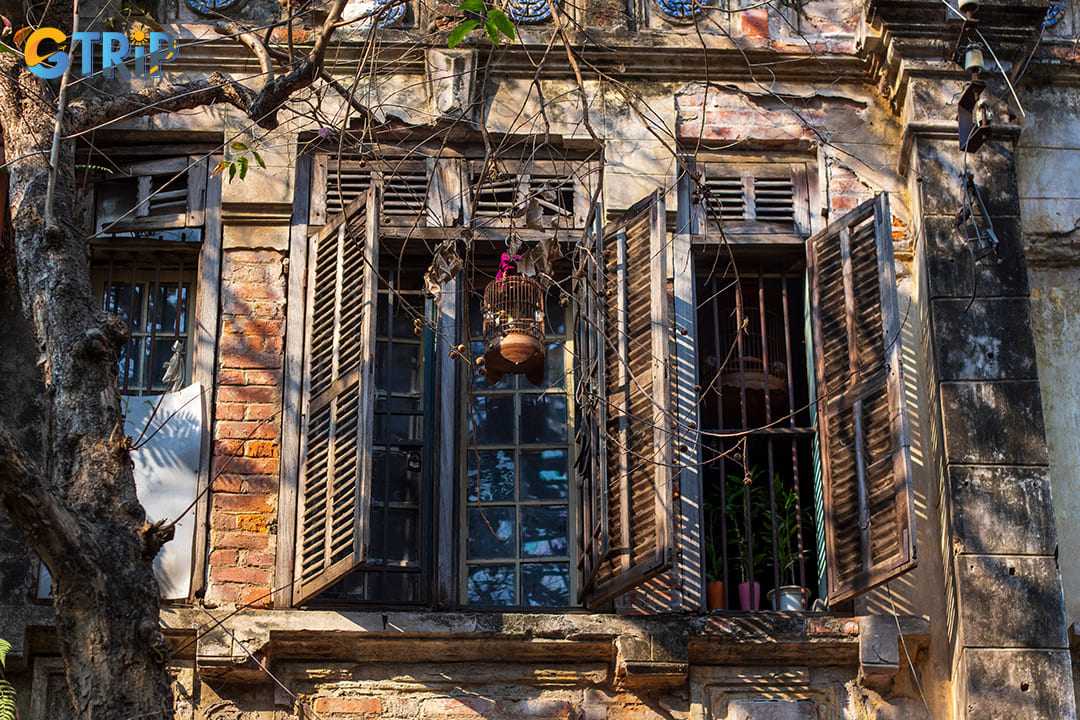
Hang Bac Street is a photographer's delight, offering a rich tapestry of visual contrasts
4. Sample Hanoi’s renowned street food at small eateries and cafes
Beyond its glittering jewelry, Hang Bac offers a treasure trove of culinary delights. The street is dotted with small, unassuming eateries and cafes that serve up some of Hanoi's most authentic flavors. You can find classic dishes like pho bo (beef noodle soup), bun cha (grilled pork with noodles), and the Vietnamese sandwich, banh mi.
Be adventurous and pull up a plastic stool at a family-run stall. Trying the local food is one of the best things to do in Hanoi, and Hang Bac provides a perfect opportunity to dive into the city's famed street food culture. For a sweet treat, look for vendors selling che, a traditional Vietnamese dessert soup.
5. Visit Kim Ngan Temple
For a moment of peace amidst the bustle, step into the Kim Ngan Temple, located at 42 Hang Bac. This historic communal house (dinh) was built in the 15th century and served the silversmith guild from Chau Khe village. It is dedicated to Hien Vien, the mythical founder of metalworking crafts.
The temple is a beautiful example of traditional Vietnamese architecture, with intricate woodwork and a serene courtyard.
- Address: 42 Hang Bac Street.
- Opening hours: Generally open to visitors during the daytime.
Please remember to dress respectfully, covering shoulders and knees, as it is an active place of worship.
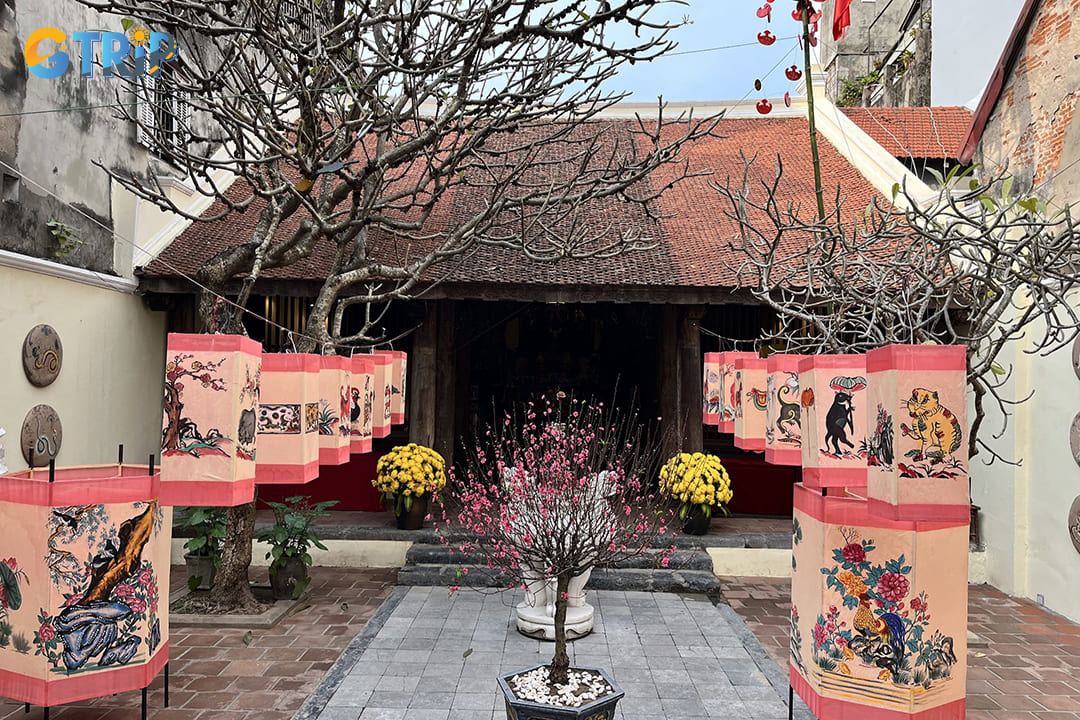
For a moment of peace amidst the bustle, step into the Kim Ngan Temple, located at 42 Hang Bac
6. Join silver-crafting demonstrations
For a truly hands-on experience, some workshops on and around Hang Bac Street offer more than just a view; they invite you to participate. These silver-making workshops allow you to learn the basic techniques of the craft from an experienced artisan. This activity offers a unique souvenir: a piece of silver jewelry that you have crafted yourself. Under expert guidance, you can shape, solder, and polish your own ring or pendant, creating a personal and memorable connection to Hanoi's ancient craft.
7. People-watch and soak up the lively ambiance of a traditional Vietnamese guild street
One of the simplest yet most rewarding activities on Hang Bac is to simply be present. Find a seat at a small streetside cafe, order a Vietnamese iced coffee (ca phe sua da), and watch the world go by. The street is a vibrant ecosystem of activity. Observe the dynamic flow of life: local families shopping for offerings, tourists mesmerized by the sparkling displays, and artisans deeply engrossed in their work. This lively mix of people and purpose is what gives Hang Bac its unique, energetic, and unforgettable atmosphere.
8. Participate in walking tours that focus on Old Quarter history and artisan traditions
To gain a deeper understanding of Hang Bac's significance, join a specialized walking tour. A knowledgeable guide can illuminate the subtle details you might otherwise miss, from architectural motifs to the stories behind the oldest family-owned shops. A guided tour is the best way to understand how Hang Bac fits into the broader context of the Old Quarter's famous "36 Streets". Each street was traditionally dedicated to a specific guild, and a tour can help you appreciate the intricate commercial and social web that has defined this historic neighborhood for centuries.

Find a seat at a small streetside cafe, order a Vietnamese iced coffee (ca phe sua da), and watch the world go by
Essential tips for visiting Hang Bac Street
- Visit during the day for the best shopping experience and to see craftsmen at work, as many workshops close in the evening.
- Bargain politely at smaller, independent shops, as it is a customary part of the local shopping culture.
- Wear comfortable shoes as you will be doing a lot of walking to fully explore the street and its surrounding alleys.
- Be mindful of traffic, as the street is narrow and bustling with motorbikes.
- Bring cash, as many smaller vendors and street food stalls may not accept credit cards.
- Explore the side alleys to discover hidden cafes, eateries, and workshops off the main thoroughfare.
Hang Bac Street nearby attractions
Hang Bac's central location makes it the perfect starting point for exploring other iconic Old Quarter landmarks.
Hoan Kiem Lake (1.1km)
A leisurely 10-15 minute walk from Hang Bac brings you to Hoan Kiem Lake, one of Hanoi's most iconic landmarks. This peaceful body of water is steeped in legend, said to be the site where Emperor Le Loi returned a magical sword to the Golden Turtle God. Framed by tree-lined paths, the lake is a popular spot for locals practicing tai chi or enjoying quiet strolls. Highlights include the elegant red The Huc Bridge, leading to Ngoc Son Temple on a small island, and the Turtle Tower (Thap Rua), a symbol of Hanoi, rising mysteriously from the center of the lake.
Dong Xuan Market (700m)
Just a short walk north of Hang Bac, Dong Xuan Market is Hanoi’s largest and busiest indoor market. This massive multi-story structure is packed with an eclectic mix of goods, from wholesale clothing and fabrics to electronics and local snacks. The ground floor’s food court is a great place to sample traditional Vietnamese street food. While Hang Bac is refined and craft-focused, Dong Xuan offers a more chaotic, energetic slice of daily Hanoi life.
Ma May Ancient House (200m)
A few minutes away on foot, the Ancient House at 87 Ma May Street offers a rare glimpse into 19th-century urban life in Hanoi. This restored merchant's home showcases traditional tube house architecture, complete with inner courtyards, wooden beams, tiled roofs, and antique furnishings. Informative displays throughout the house explain its structure and the customs of the time, making it a perfect stop for anyone interested in the cultural heritage of the Old Quarter.
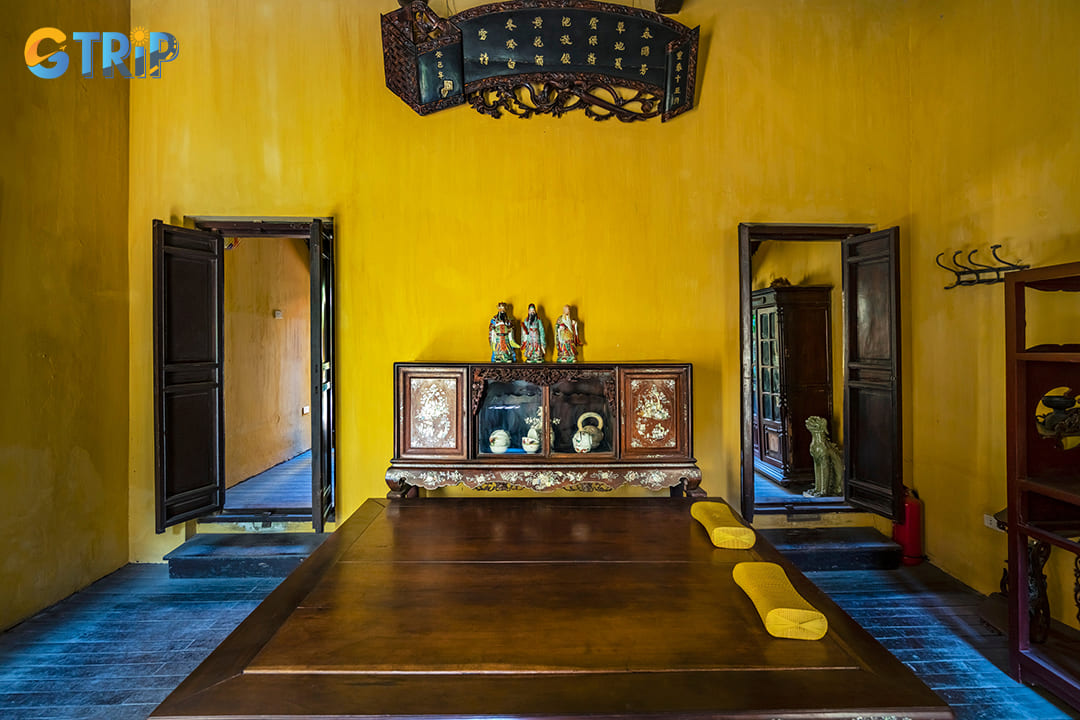
A few minutes away on foot, the Ancient House at 87 Ma May Street offers a rare glimpse into 19th-century urban life in Hanoi
Hang Bac Street is more than just a historic lane in Hanoi’s Old Quarter. It’s a living museum of craftsmanship, culture, and commerce. From its origins as a royal mint to its evolution into a bustling jewelry street, every corner tells a story shaped by generations of artisans and traders. Hang Bac offers an authentic slice of Hanoi’s heritage. A visit to this vibrant street isn’t just about what you buy. It’s about what you discover along the way. Book Hanoi tours of GTrip - Vietnam Travel Agency to explore Hang Bac Street with careful support.

